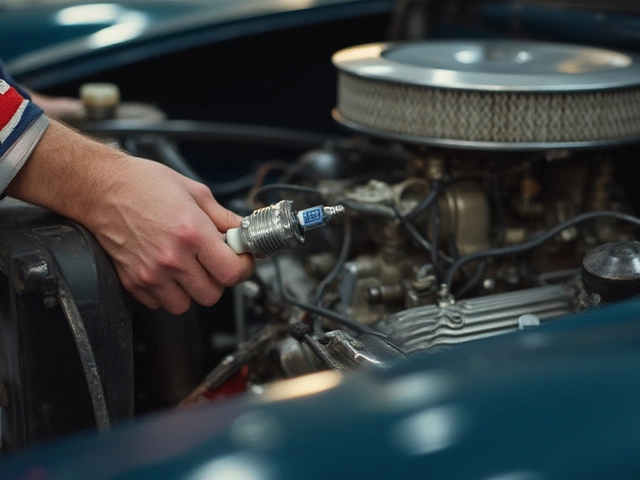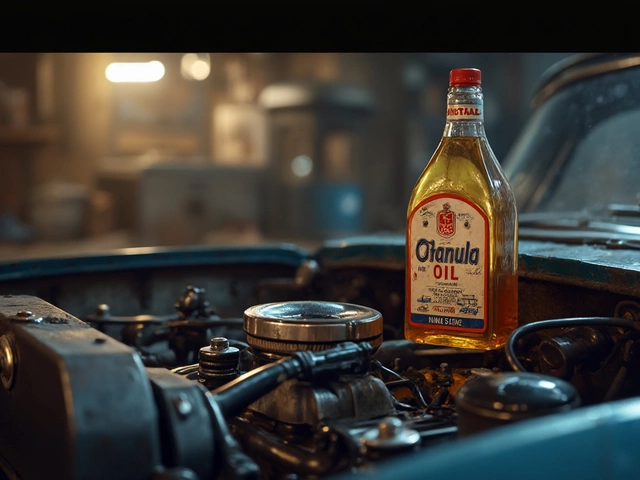Dirty Engine Oil: Spot the Signs, Understand the Risks, and Fix It Fast
Ever looked at the dipstick and wondered why the oil looks brown or gritty? That’s a clear sign the oil is getting dirty, and it can cost you big time if you ignore it. Dirty oil loses its ability to lubricate, cool, and clean the engine, so you’ll start seeing rough idling, reduced fuel efficiency, and even strange noises. Let’s break down what "dirty engine oil" really means, how to catch it early, and what to do about it.
How to Know Your Oil Is Dirty
The quickest check is the dipstick. Fresh oil is usually a clear amber. If it looks dark, thick, or has particles floating in it, the oil’s broken down. You might also notice a burnt smell or foamy texture – both are red flags. Another clue is the oil light on your dashboard. It may glow dimmer or flicker when the oil can’t flow properly because it’s clogged with sludge.
Besides visual cues, listen to your engine. A ticking or knocking sound often signals metal particles grinding together because the oil isn’t providing a protective film. If you feel the car pulling harder or the fuel gauge dropping faster, dirty oil could be making your engine work harder than it should.
Why Dirty Oil Hurts Your Engine
Oil does three jobs: lubricate moving parts, carry heat away, and trap dirt. When the oil gets dirty, it can’t do any of those well. Metal fragments can turn into abrasive grit, wearing down bearings and camshafts. Heat builds up faster, leading to overheating and possible warping of engine components. Over time, this adds up to costly repairs – think blown head gasket or seized engine.
Dirty oil also reduces fuel efficiency. The engine has to pump harder, so you’ll see a dip in miles per gallon. That’s money you could save just by changing the oil at the right intervals.
What to Do When Your Oil Is Dirty
First, don’t panic. The fix is straightforward: replace the oil and the filter. A good rule of thumb is to change the oil every 5,000–7,500 miles for most modern cars, but check your owner’s manual for the exact interval. If you drive a lot in stop‑start traffic, dusty roads, or haul heavy loads, you might need to go a bit sooner.
When you’re ready, warm up the engine for a few minutes. Warm oil drains faster and carries more contaminants out. Then, locate the drain plug, place a pan underneath, and let the oil flow out completely. Replace the plug, install a fresh oil filter (don’t reuse old ones), and pour in the recommended grade of oil. Check the level with the dipstick after a few minutes and top up if needed.
If you’re not comfortable doing it yourself, a quick stop at Northwich Tyres Centre can get you sorted. Their technicians will check the oil condition, change it, and even inspect other parts like the air filter and spark plugs to keep everything running smooth.
Finally, keep an eye on your oil between changes. Regularly pull the dipstick, especially before long trips. A little habit can save you from a major breakdown later on.
Bottom line: dirty engine oil is a silent enemy, but it’s easy to beat. Spot the signs, change it on schedule, and you’ll enjoy a healthier engine and lower fuel bills. Stay proactive, and your car will thank you with years of reliable performance.
 27 February 2025
27 February 2025
Symptoms of Dirty Engine Oil You Need to Know About
Dirty engine oil can cause a variety of issues in your vehicle, compromising performance and longevity. Understanding the symptoms of contaminated oil helps you address them promptly. This article explores signs like engine noise, poor mileage, and excessive exhaust smoke. Discover practical tips to keep your car running smoothly.






0